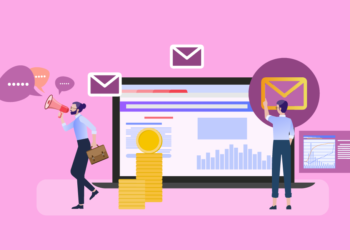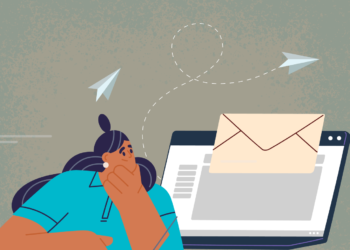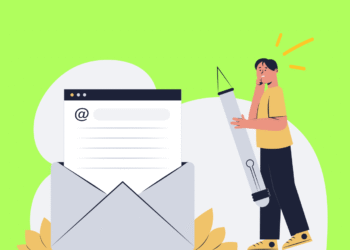Personalized emails not only grab your subscribers’ attention but also make them feel valued and understood, leading to higher engagement, better click-through rates, and more conversions.
However, manually personalizing emails for every subscriber is practically impossible, especially as your list grows. That’s where automation comes in. By using automation, you can easily create personalized experiences at scale, tailoring your emails to match each subscriber’s preferences, behaviors, and needs. Here’s how to use automation to personalize your emails and build stronger connections with your audience.
Step 1: Gather and Segment Your Subscriber Data
The foundation of effective email personalization is having the right data on your subscribers. This includes basic information like their name and email address, as well as more detailed data such as:
- Demographics: Age, gender, location, job title, etc.
- Behavioral Data: Website visits, past purchases, email engagement, browsing history, etc.
- Preferences: Interests, preferred content types, favorite products, etc.
Start by collecting this data at the point of sign-up, through preference centers, or by integrating your email platform with your CRM or e-commerce platform. Once you have this data, use automation to segment your audience into groups based on shared characteristics or behaviors. For example, you might segment your audience into frequent buyers, recent subscribers, or those interested in specific product categories.
How to Automate: Use your email marketing platform’s segmentation tools to create dynamic segments that automatically update based on real-time data. This ensures that your emails are always targeted and relevant to the right audience.
Step 2: Use Dynamic Content Blocks
Dynamic content allows you to create one email template that displays different content for different segments of your audience. This means you can tailor everything from images and product recommendations to offers and messaging based on each subscriber’s preferences and behaviors.
For example, if you’re sending a promotional email, you can use dynamic content blocks to show different products based on what each subscriber has previously viewed or purchased. This makes your emails feel more personalized without the need to create multiple versions of the same email.
How to Automate: Set up dynamic content rules in your email platform. Most platforms, like Klaviyo, ActiveCampaign, and HubSpot, offer easy-to-use tools for adding dynamic content blocks that change based on the subscriber’s data.
Step 3: Personalize Subject Lines and Preview Text
The subject line and preview text are your first opportunities to make a personal connection with your subscriber, and they play a crucial role in whether or not your email gets opened. Use personalization tags to dynamically insert subscriber-specific details, like their name, location, or product preferences, directly into the subject line and preview text.
Examples of Personalized Subject Lines:
- “Hey [Name], Check Out These New Arrivals Just for You!”
- “We Thought You’d Love This, [Name]!”
- “Exclusive Offer for Our Favorite [City] Customers”
How to Automate: Use your email platform’s personalization features to automatically pull in subscriber data. Set up rules to customize subject lines and preview text for each recipient based on their profile and behavior.
Step 4: Automate Behavioral Triggers
Behavioral triggers are automated emails that are sent based on specific actions taken by your subscribers. These can include:
- Welcome Emails: Sent when someone subscribes to your list, introducing them to your brand and setting expectations.
- Abandoned Cart Emails: Triggered when a subscriber adds items to their cart but doesn’t complete the purchase.
- Product Recommendations: Based on browsing history or past purchases, these emails suggest products that the subscriber is likely to be interested in.
- Re-Engagement Emails: Sent to subscribers who haven’t engaged with your emails in a while, designed to win them back with special offers or relevant content.
Behavioral triggers allow you to deliver highly relevant messages at the perfect time, enhancing the personalization of your emails and increasing the likelihood of engagement.
How to Automate: Use your email platform’s automation workflows to set up triggers based on subscriber actions. Define the criteria for each trigger, such as “if a subscriber views a product page but doesn’t purchase,” and customize the content to match the specific behavior.
Step 5: Use AI-Powered Recommendations
AI-powered recommendation engines take personalization to the next level by analyzing large amounts of data to predict what each subscriber is most likely to be interested in. This technology can automatically suggest products, content, or offers based on past behavior, similar customers, or trends.
For example, if a subscriber has purchased running shoes, an AI-powered engine might recommend complementary products like socks, sportswear, or fitness accessories. This level of personalization not only enhances the shopping experience but also drives higher engagement and conversions.
How to Automate: Integrate AI-powered recommendation tools with your email platform. Many platforms have built-in AI capabilities or can connect with third-party recommendation engines to deliver personalized suggestions in real-time.
Step 6: Personalize Send Times with Send Time Optimization
Send time optimization uses data to determine the best time to send emails to each subscriber based on when they are most likely to open them. By automating send times, you can ensure that your emails arrive in your subscribers’ inboxes at the optimal moment, increasing the chances of being seen and opened.
How to Automate: Set up send time optimization in your email platform. This feature analyzes past behavior to predict the best time for each individual subscriber and automatically adjusts send times accordingly. Many platforms offer this as a built-in feature, making it easy to implement.
Step 7: Include Personalized Calls to Action (CTAs)
Personalizing your calls to action can make them more compelling and relevant to your subscribers. Instead of using generic CTAs like “Shop Now” or “Learn More,” tailor your CTAs to reflect the subscriber’s interests or previous actions.
Examples of Personalized CTAs:
- “Explore New Deals for [Favorite Category]”
- “Finish Your Order for [Product Name]”
- “Discover More Products You’ll Love”
How to Automate: Use dynamic content to adjust your CTAs based on subscriber data. Set up rules in your email platform that change the CTA based on factors like the subscriber’s past purchases, browsing history, or the segment they belong to.
Step 8: Test and Optimize Your Personalization Strategies
Personalization is not a one-size-fits-all approach, and what works for one audience might not work for another. That’s why it’s important to continually test and optimize your personalization strategies. Use A/B testing to experiment with different personalization tactics, such as varying subject lines, content layouts, or product recommendations.
What to Test:
- Personalization Level: Test the impact of basic personalization (e.g., using names) versus more advanced techniques (e.g., behavior-based content).
- Content Variations: Experiment with different types of personalized content, such as product recommendations, educational tips, or exclusive offers.
- Send Times: Optimize your send times through testing to find the best times for each segment or individual subscriber.
How to Automate: Set up A/B tests within your email platform to automatically run tests and report on the results. Use the insights gained from these tests to refine your approach and continually improve your personalization efforts.
Conclusion: Automate Your Way to More Personalized Emails
Personalizing your emails at scale is made possible with the power of automation. By using the right tools and strategies, you can deliver targeted, relevant, and engaging content that resonates with your audience and drives better results.
From segmenting your audience and using dynamic content blocks to leveraging AI recommendations and optimizing send times, there are countless ways to enhance your email personalization through automation. Keep testing, refining, and adapting your approach to meet the evolving needs of your subscribers, and watch as your engagement and conversions soar.







